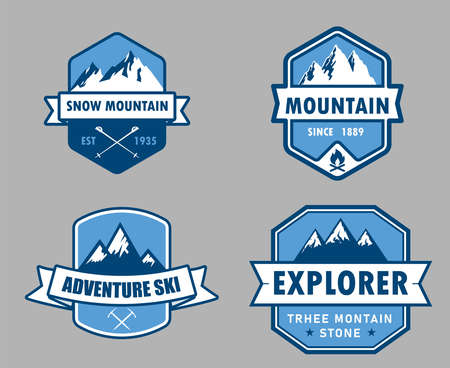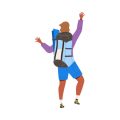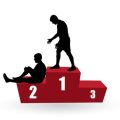1. Understanding the Importance of a Wilderness First Aid Kit
When you’re heading out into America’s great outdoors—whether it’s hiking in the Rockies, backpacking in the Appalachian Trail, or camping in remote parts of Yosemite—a well-prepared wilderness first aid kit is an absolute must. Unlike city adventures, help is often hours away, and cell service can be spotty or non-existent. That means you need to be ready to handle medical issues yourself until professional help arrives.
Why does this matter so much? In the backcountry, even a small injury like a cut or blister can turn into a major problem if not treated quickly. Issues like allergic reactions, sprained ankles, or dehydration are also much more serious when you’re miles from the nearest trailhead. A customized first aid kit helps you address these unique risks, giving you the confidence to explore safely.
The Unique Challenges of Remote U.S. Environments
American wilderness areas are incredibly diverse—from hot deserts to snowy mountains and dense forests. Each environment brings its own set of medical concerns:
| Environment | Common Risks | Why a First Aid Kit Helps |
|---|---|---|
| Desert (e.g., Southwest) | Dehydration, heatstroke, snake bites | Supplies for hydration and bite care can save lives |
| Mountains (e.g., Rockies, Sierra Nevada) | Altitude sickness, hypothermia, falls | Treat altitude symptoms and stabilize injuries on the spot |
| Forests (e.g., Pacific Northwest, Appalachians) | Insect bites, tick-borne illnesses, cuts from brush | Bite/sting relief and wound care prevent infections |
| Lakes & Rivers (e.g., Boundary Waters, Ozarks) | Drowning risks, hypothermia, waterborne illnesses | Treat minor wounds and stay warm/dry until help comes |
Personalizing Your Kit for American Adventures
No two trips are exactly alike. The gear you bring to Yellowstone might look different than what you pack for a trip in Arizona’s Grand Canyon. By understanding your destination and group needs—including allergies or pre-existing medical conditions—you can build a kit that truly fits your adventure.
Key Takeaways for Outdoor Enthusiasts:
- A wilderness first aid kit is more than just bandages—it’s your lifeline when help is far away.
- The right kit helps manage everything from blisters to serious injuries specific to American landscapes.
- Customizing your kit based on where you’re going and who’s coming along makes all the difference.
A little preparation goes a long way. With the right first aid kit in your pack, you’ll be ready for whatever Mother Nature throws your way while exploring America’s wild places.
Essential Components of a Wilderness First Aid Kit
When youre heading into the American backcountry, having the right items in your wilderness first aid kit can make a huge difference. From common scrapes to emergencies like snakebites, your kit should be ready for anything. Here’s a breakdown of must-have supplies you’ll want to pack.
Basic Wound Care Supplies
Keeping wounds clean and covered is key to preventing infection on the trail. Make sure you include:
| Item | Purpose |
|---|---|
| Adhesive bandages (various sizes) | Cover minor cuts and blisters |
| Sterile gauze pads & rolls | Dress larger wounds or burns |
| Medical tape | Secure dressings in place |
| Antiseptic wipes/solution | Clean wounds to reduce infection risk |
| Moleskin or blister pads | Treat and prevent blisters from hiking boots |
Medications and Treatments
Packing a few common medications will help you deal with pain, allergies, and stomach issues that can happen outdoors.
| Medication | Use Case |
|---|---|
| Pain relievers (ibuprofen/acetaminophen) | Treat headaches, muscle aches, or minor injuries |
| Antihistamines (like Benadryl) | Manage allergic reactions, including bug bites or plant exposure |
| Antacid tablets | Ease upset stomachs after camp meals |
| Loperamide (Imodium) | Treat diarrhea—a common issue on long hikes or unfamiliar water sources |
| Hydrocortisone cream | Soothe rashes from poison ivy or bug bites |
| Aspirin (chewable) | Useful if someone shows signs of heart attack; call 911 immediately as well! |
Tools and Specialty Gear for American Outdoors
Certain tools are essential in the wild. Some are especially relevant for outdoor adventures in North America:
| Tool/Supply | Description/Use Case |
|---|---|
| Tweezers/tick remover tool | Remove ticks safely, which is important in areas with Lyme disease risk (Northeast, Midwest) |
| SAM splint or flexible splint material | Immobilize sprains or suspected fractures until help arrives |
| Sterile gloves (nitrile) | Protect yourself and the injured person while giving care |
| Cotton swabs/Q-tips | Apply ointments or clean wounds gently |
| Duct tape/safety pins | Patching gear, securing bandages, improvising splints |
| Snakebite suction kit | If exploring regions with venomous snakes (like the South or Southwest), carry a snakebite treatment kit—though immediate evacuation is always recommended |
Other Helpful Items for U.S. Backcountry Trips
- An emergency whistle to signal for help
- An emergency blanket (space blanket) for warmth
- A small flashlight or headlamp
- A notepad and waterproof pen for writing down vital info
- A laminated card listing emergency contacts and any known allergies/li>/ul>
Packing Tips
- Select a durable, waterproof pouch to keep your supplies dry
- Check expiration dates regularly and restock items after each trip
- Add personal medications specific to you or your group members
- If traveling in bear country, keep medical supplies with your food in a bear-safe container when not in use/li>/ul

3. Customizing Your Kit for Specific Adventures
No two adventures are exactly the same, so your wilderness first aid kit should fit your trip’s unique needs. Here’s how you can make sure your kit has everything you need, whether you’re hiking solo in the Rockies or leading a family campout in the Midwest.
Consider Group Size
The more people in your group, the more supplies you’ll need. For groups of four or more, pack extra bandages, antiseptic wipes, gloves, and pain relievers. Remember to include personal medications for every member.
Group Size
Recommended Supplies
Solo (1 person)
Basic kit + personal meds
2-4 people
Double bandages/wipes, extra gloves
5+ people
Larger wound care items, more meds, space blankets
Trip Duration Matters
A weekend hike needs less than a week-long backcountry trek. For longer trips, bring backup supplies and extras of essentials like tape, gauze, and ointment. Consider how far you’ll be from help—remote trips require more comprehensive kits.
Local Wildlife Hazards
The U.S. is home to a variety of critters that can pose medical risks. In snake country (like the Southwest), include a snakebite kit and know how to use it. In areas with ticks (Northeast, Midwest), add tick removers and instructions for Lyme disease symptoms. If bears are around, carry bear spray (and know how to use it safely).
Common Regional Risks in the U.S.
Region
Risk
Add to Kit
Southeast/Midwest
Poison Ivy/Oak/Sumac
Poison ivy wipes, calamine lotion, antihistamines
Northern U.S./Mountains
Hypothermia/Frostbite
Emergency blanket, hand warmers, waterproof tape
Southwest/Desert
Snake bites/Dehydration
Snakebite kit, electrolyte tablets, extra water purification tabs
Pacific Northwest/Alaska
Mosquitoes/Bears/Wet weather injuries
Mosquito repellent, bear spray, blister treatment supplies
Anywhere remote in the U.S.
No cell service/Emergency comms needed
Whistle, signal mirror, waterproof notepad/pencil for notes to rescuers
Pro Tip: Personalize!
Add items based on your group’s medical needs—think EpiPens for allergies or insulin for diabetics. Check expiration dates before each trip and restock used items so you’re always ready for whatever the trail throws your way.
4. Packing and Organizing Your First Aid Kit
When you’re building a wilderness first aid kit, the way you pack and organize your supplies can make all the difference in an emergency. Here’s how to keep things easy to find, protected from the elements, and ready for action in the great outdoors.
Choose Rugged, Waterproof Containers
Your first priority is picking a container that can handle rough conditions. Many hikers in the U.S. use hard-shell waterproof cases (like Pelican or Plano boxes) or heavy-duty nylon bags with sealed zippers. Dry bags are also popular for keeping moisture out. Make sure your container:
- Is large enough to fit all your essentials but not so bulky it weighs you down
- Has a secure closure to keep water, dirt, and dust out
- Is brightly colored or has reflective strips for easy spotting in your pack
Common Container Options
Container Type
Main Benefits
Typical Use
Hard Shell Box
Crush-proof, waterproof, highly protective
Backpacking, canoeing, rugged adventures
Nylon Bag with Zipper
Lightweight, flexible, often has compartments
Day hikes, group kits, organized storage
Dry Bag
Waterproof, simple roll-top closure
Paddling trips, rainy climates, ultralight packing
Organize Supplies for Quick Access
A jumbled kit wastes precious time when someone is hurt. Organize items by category—such as wound care, medications, and tools—and store them in separate pouches or ziplock bags. In the U.S., many hikers use color-coded or labeled bags to identify supplies at a glance.
- Red pouch: Bleeding control (gauze pads, bandages)
- Blue pouch: Medications (pain relievers, antihistamines)
- Green pouch: Blister care (moleskin, tape)
- Labeled ziplocks: Personal items (inhaler, EpiPen)
Sample Organization Table
Pouch/Section Color or Label
Contents Example
Red – Bleeding & Trauma
Sterile gauze pads, trauma shears, gloves
Blue – Medications & Ointments
Painkillers, anti-itch cream, allergy meds
Green – Minor Wounds & Blisters
Moleskin, adhesive bandages, alcohol wipes
Labeled “Personal” Bag
User-specific prescriptions or medical needs
Add a Quick Reference Guide
Tuck in a small laminated card listing basic first aid steps or emergency contacts. This is common practice among American outdoor enthusiasts and helps if you’re stressed or if someone unfamiliar with the kit needs to help.
Packing Tips from U.S. Outdoor Pros:
- Restock your kit after every trip—don’t get caught missing key items!
- If hiking with a group, let everyone know where the kit is stored in your pack.
- Date-check medications regularly; swap expired ones for fresh replacements.
- If traveling in bear country or on rivers, double-bag sensitive supplies for extra protection.
A well-packed and clearly organized first aid kit gives you confidence and saves time when every second counts on trail adventures.
5. Using Your Wilderness First Aid Kit Effectively
Guidelines for Quick Response in Emergency Situations
When you’re in the backcountry, emergencies can happen fast. Knowing how to use your wilderness first aid kit efficiently can make a huge difference. Here are some simple steps to follow when responding to an emergency:
Step
What to Do
1. Stay Calm
Take a deep breath and assess the situation before rushing in.
2. Ensure Safety
Check if the scene is safe for you and others before providing help.
3. Assess the Victim
Look for life-threatening issues first: breathing, bleeding, consciousness.
4. Use PPE (Personal Protective Equipment)
Wear gloves or a mask if available to protect yourself.
5. Apply First Aid
Use items from your kit as needed—bandages, antiseptics, splints, etc.
6. Call for Help
If possible, use a cell phone, satellite device, or send someone for help.
Recommendations for American Red Cross First Aid Training
The American Red Cross offers excellent first aid and CPR courses tailored for outdoor enthusiasts. Taking one of these classes will give you hands-on experience with real-life scenarios and teach you:
- How to recognize and treat common outdoor injuries like sprains, burns, cuts, and allergic reactions.
- How to perform CPR and rescue breathing in remote settings.
- The best ways to improvise with limited supplies found in a standard wilderness first aid kit.
Find a Local Course
You can search for nearby American Red Cross wilderness first aid courses online or at your local community center. These certifications are well-respected across the U.S. and are often required for group leaders or guides.
Best Practices for Staying Calm and Efficient Outdoors
- Practice using your first aid kit before heading out—familiarity saves time in an emergency.
- Keep your kit organized so you know where everything is when seconds count.
- If you’re traveling with others, make sure everyone knows what’s in the kit and how to use it.
Mental Tips for Stressful Moments
- Breathe slowly and talk yourself through each step aloud if needed—it helps keep your mind clear.
- If you feel overwhelmed, ask a companion to double-check what you’re doing or take over specific tasks.
With preparation and practice, you’ll be ready to handle most emergencies on the trail using your wilderness first aid kit!
- An emergency whistle to signal for help
- An emergency blanket (space blanket) for warmth
- A small flashlight or headlamp
- A notepad and waterproof pen for writing down vital info
- A laminated card listing emergency contacts and any known allergies/li>/ul>
Packing Tips
- Select a durable, waterproof pouch to keep your supplies dry
- Check expiration dates regularly and restock items after each trip
- Add personal medications specific to you or your group members
- If traveling in bear country, keep medical supplies with your food in a bear-safe container when not in use/li>/ul

3. Customizing Your Kit for Specific Adventures
No two adventures are exactly the same, so your wilderness first aid kit should fit your trip’s unique needs. Here’s how you can make sure your kit has everything you need, whether you’re hiking solo in the Rockies or leading a family campout in the Midwest.
Consider Group Size
The more people in your group, the more supplies you’ll need. For groups of four or more, pack extra bandages, antiseptic wipes, gloves, and pain relievers. Remember to include personal medications for every member.
Group Size Recommended Supplies Solo (1 person) Basic kit + personal meds 2-4 people Double bandages/wipes, extra gloves 5+ people Larger wound care items, more meds, space blankets Trip Duration Matters
A weekend hike needs less than a week-long backcountry trek. For longer trips, bring backup supplies and extras of essentials like tape, gauze, and ointment. Consider how far you’ll be from help—remote trips require more comprehensive kits.
Local Wildlife Hazards
The U.S. is home to a variety of critters that can pose medical risks. In snake country (like the Southwest), include a snakebite kit and know how to use it. In areas with ticks (Northeast, Midwest), add tick removers and instructions for Lyme disease symptoms. If bears are around, carry bear spray (and know how to use it safely).
Common Regional Risks in the U.S.
Region Risk Add to Kit Southeast/Midwest Poison Ivy/Oak/Sumac Poison ivy wipes, calamine lotion, antihistamines Northern U.S./Mountains Hypothermia/Frostbite Emergency blanket, hand warmers, waterproof tape Southwest/Desert Snake bites/Dehydration Snakebite kit, electrolyte tablets, extra water purification tabs Pacific Northwest/Alaska Mosquitoes/Bears/Wet weather injuries Mosquito repellent, bear spray, blister treatment supplies Anywhere remote in the U.S. No cell service/Emergency comms needed Whistle, signal mirror, waterproof notepad/pencil for notes to rescuers Pro Tip: Personalize!
Add items based on your group’s medical needs—think EpiPens for allergies or insulin for diabetics. Check expiration dates before each trip and restock used items so you’re always ready for whatever the trail throws your way.
4. Packing and Organizing Your First Aid Kit
When you’re building a wilderness first aid kit, the way you pack and organize your supplies can make all the difference in an emergency. Here’s how to keep things easy to find, protected from the elements, and ready for action in the great outdoors.
Choose Rugged, Waterproof Containers
Your first priority is picking a container that can handle rough conditions. Many hikers in the U.S. use hard-shell waterproof cases (like Pelican or Plano boxes) or heavy-duty nylon bags with sealed zippers. Dry bags are also popular for keeping moisture out. Make sure your container:
- Is large enough to fit all your essentials but not so bulky it weighs you down
- Has a secure closure to keep water, dirt, and dust out
- Is brightly colored or has reflective strips for easy spotting in your pack
Common Container Options
Container Type Main Benefits Typical Use Hard Shell Box Crush-proof, waterproof, highly protective Backpacking, canoeing, rugged adventures Nylon Bag with Zipper Lightweight, flexible, often has compartments Day hikes, group kits, organized storage Dry Bag Waterproof, simple roll-top closure Paddling trips, rainy climates, ultralight packing Organize Supplies for Quick Access
A jumbled kit wastes precious time when someone is hurt. Organize items by category—such as wound care, medications, and tools—and store them in separate pouches or ziplock bags. In the U.S., many hikers use color-coded or labeled bags to identify supplies at a glance.
- Red pouch: Bleeding control (gauze pads, bandages)
- Blue pouch: Medications (pain relievers, antihistamines)
- Green pouch: Blister care (moleskin, tape)
- Labeled ziplocks: Personal items (inhaler, EpiPen)
Sample Organization Table
Pouch/Section Color or Label Contents Example Red – Bleeding & Trauma Sterile gauze pads, trauma shears, gloves Blue – Medications & Ointments Painkillers, anti-itch cream, allergy meds Green – Minor Wounds & Blisters Moleskin, adhesive bandages, alcohol wipes Labeled “Personal” Bag User-specific prescriptions or medical needs Add a Quick Reference Guide
Tuck in a small laminated card listing basic first aid steps or emergency contacts. This is common practice among American outdoor enthusiasts and helps if you’re stressed or if someone unfamiliar with the kit needs to help.
Packing Tips from U.S. Outdoor Pros:
- Restock your kit after every trip—don’t get caught missing key items!
- If hiking with a group, let everyone know where the kit is stored in your pack.
- Date-check medications regularly; swap expired ones for fresh replacements.
- If traveling in bear country or on rivers, double-bag sensitive supplies for extra protection.
A well-packed and clearly organized first aid kit gives you confidence and saves time when every second counts on trail adventures.
5. Using Your Wilderness First Aid Kit Effectively
Guidelines for Quick Response in Emergency Situations
When you’re in the backcountry, emergencies can happen fast. Knowing how to use your wilderness first aid kit efficiently can make a huge difference. Here are some simple steps to follow when responding to an emergency:
Step What to Do 1. Stay Calm Take a deep breath and assess the situation before rushing in. 2. Ensure Safety Check if the scene is safe for you and others before providing help. 3. Assess the Victim Look for life-threatening issues first: breathing, bleeding, consciousness. 4. Use PPE (Personal Protective Equipment) Wear gloves or a mask if available to protect yourself. 5. Apply First Aid Use items from your kit as needed—bandages, antiseptics, splints, etc. 6. Call for Help If possible, use a cell phone, satellite device, or send someone for help. Recommendations for American Red Cross First Aid Training
The American Red Cross offers excellent first aid and CPR courses tailored for outdoor enthusiasts. Taking one of these classes will give you hands-on experience with real-life scenarios and teach you:
- How to recognize and treat common outdoor injuries like sprains, burns, cuts, and allergic reactions.
- How to perform CPR and rescue breathing in remote settings.
- The best ways to improvise with limited supplies found in a standard wilderness first aid kit.
Find a Local Course
You can search for nearby American Red Cross wilderness first aid courses online or at your local community center. These certifications are well-respected across the U.S. and are often required for group leaders or guides.
Best Practices for Staying Calm and Efficient Outdoors
- Practice using your first aid kit before heading out—familiarity saves time in an emergency.
- Keep your kit organized so you know where everything is when seconds count.
- If you’re traveling with others, make sure everyone knows what’s in the kit and how to use it.
Mental Tips for Stressful Moments
- Breathe slowly and talk yourself through each step aloud if needed—it helps keep your mind clear.
- If you feel overwhelmed, ask a companion to double-check what you’re doing or take over specific tasks.
With preparation and practice, you’ll be ready to handle most emergencies on the trail using your wilderness first aid kit!


